Dhammagiri Buddhist Podcasts
Dhamma Talks, Chanting, Precepts and Meditation with Ajahn Dhammasiha and other experienced Senior Buddhist Monks in the Theravada Forest Tradition of Ajahn Chah. Recorded at Dhammagiri Forest Hermitage, Brisbane, Australia. Our website: https://www.dhammagiri.net Our Youtube Channel, including regular live streams on the weekend "Dhammatalks at Dhammagiri": https://www.youtube.com/@dhammatalksatdhammagiri8724 Our email Newsletter: https://www.dhammagiri.net/newsletter Our Spotify Playlists are here: https://open.spotify.com/user/8z4dmrysnbbnjtz9f0wzjgcre .
Mindfulness of the Body - Ajahn Moneyyo: 32 Bodyparts, 9 Cemetery Contemplations, 4 Elements | Asubha | Aniccā
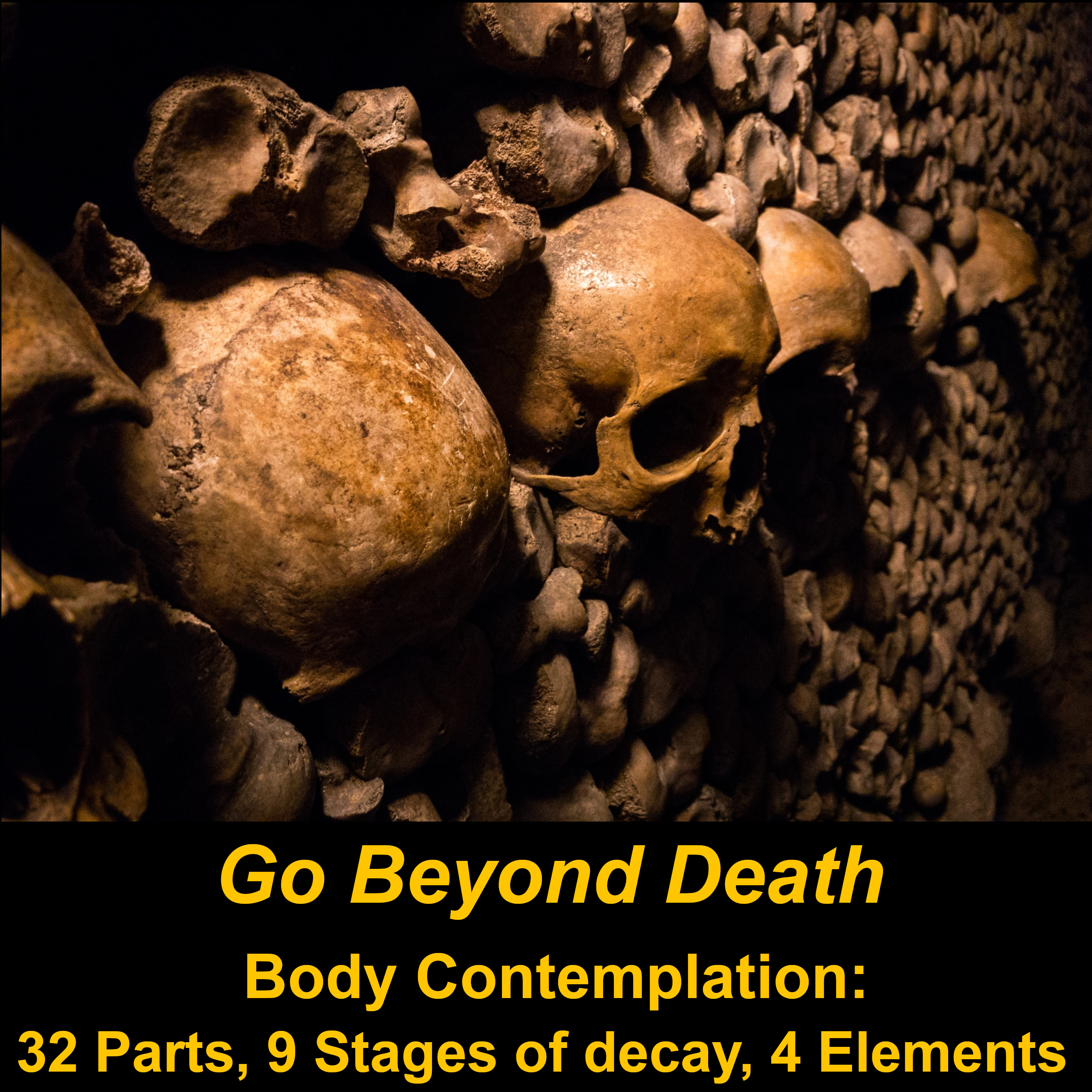
Ajahn Moneyyo gives an introduction and practical instructions to develop mindfulness of the body by contemplating the 32 Bodyparts, the 9 cemetery contemplations and the 4 elements according to the discourse about the 4 foundations of mindfulness (4 Satipatthānā, Middle Length Discourses Nr. 10).
https://www.dhammatalks.org/suttas/MN...
By seeing the body as impermanent (Aniccā) and not-self (Anatta) our heart can become disenchanted and realize a peace and liberation beyond ageing and death.
Website
Our Spotify Playlists
Newsletter
Dhammagiri Youtube Channel
Pics
#mindfulness #mindfulnessmeditation #meditation #insight #vipassana
Long-Term Minimum Effort vs Short-Term Heroic Effort | Ajahn Dhammasiha | Dhamma Talk on Buddhism
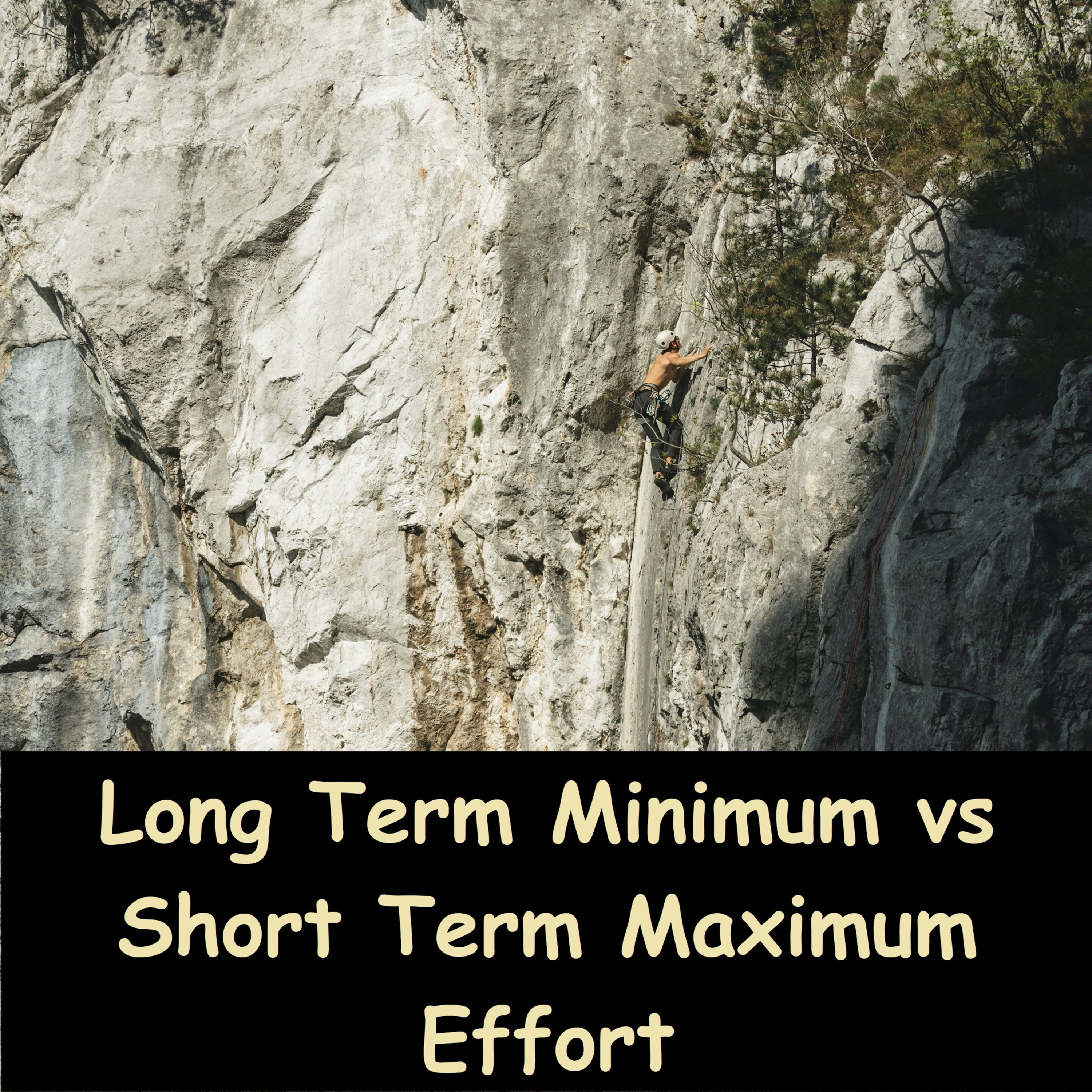
During an all-night meditation, or during a retreat period, we tend to exert maximum effort. However, no one can maintain maximum effort for a very long time.
Unfortunately, once we can't maintain the high level anymore, we often end up relaxing too much.
Unfortunately, it's much easier and faster to regress in our bhāvanā, than to quickly progress.
So we may end up losing hard earned 3 months of progress within just one week of carelessness.
Therefore, Ajahn Dhammasiha encourages us to look at the minimum standard we maintain throughout. A hi...
Animals in Buddhism | Kindness and Respect to Animals | Ajahn Dhammasiha | Dhamma Talk

Right after the end of the rains retreat period, the Dhammagiri monks had been invited to visit the iconic Australia Zoo.
Ajahn Dhammasiha uses the occasion to share reflections on Dhamma teachings about animals. Of all the major religions, Buddhism has the clearest and most impactful teachings about showing compassion and loving kindness to animals.
For example, the first precept to abstain from killing refers to animals just as to humans. As a follower of the Buddha, we should never intentionally kill even an ant of mozzie.
Ajahn also shares stories of animal...
Inviting Feedback | Constructive Criticism | Pavarana Ceremony | End Rains Retreat | Ajahn Dhammasiha
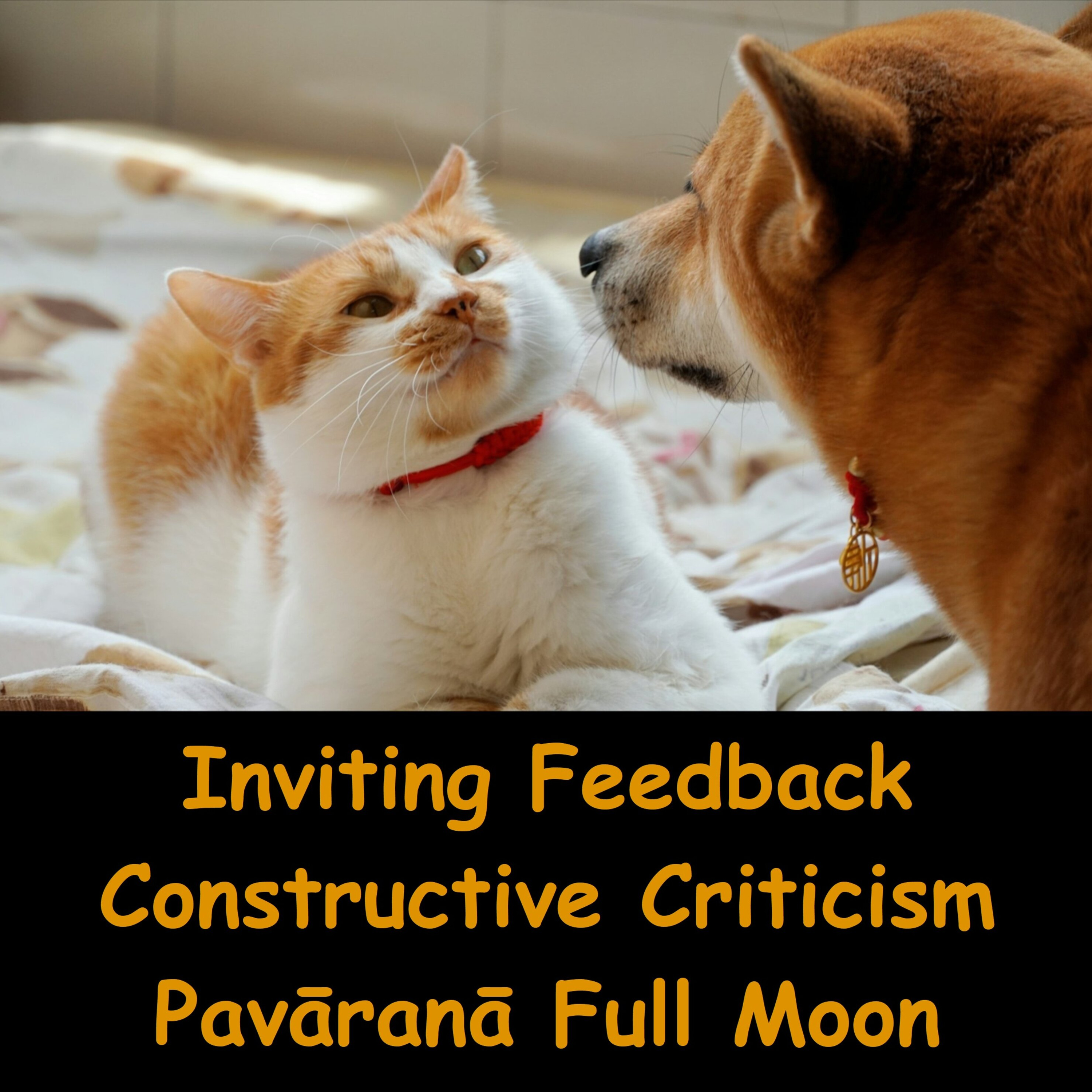
Dhamma talk by Ajahn Dhammasiha on occasion of Pavarana Full Moon.
It is important to be able to receive feedback on our actions. We can learn much from constructive criticism, if it is done with good will, by knowledgeable persons.
Is is so difficult to see one's own weaknesses and shortcomings, but quite easy to recognize them in others. Consequently, feedback and criticism based on loving kindness, compassion & thorough knowledge of the Buddha's teaching and discipline can be an invaluable opportunity to see through one's own delusions and actually improve oneself.
However, for...
Anatta: Empty of Self or Belonging to Self, even Thoughts | Emptiness Sunyata | Ajahn Dhammasiha

Dhamma Talk by Ajahn Dhammasīha, offering reflections on the Buddha's teaching:
"Suññam idaṃ attena vā attanīyena vā!"
= "Empty of Self and Empty of Anything belonging to Self"
When we contemplate our body, thoughts, feelings, emotions, even our meditation object, as not Self and not belonging to any Self, suddenly everything becomes so much lighter, so much less d...
Be Aware, Don't React and Let Go | Buddhist Guided Meditation | Vipassana | Insight | Ajahn Dhammasiha

In this guided meditation, Ajahn Dhammasiha encourages us to simply be aware of what we experience in the present moment.
Observing, knowing, being mindful of what is, without trying to change the experience, without trying to achieve or attain anything.
However, though we are aware and mindful, we do not 'engage' with what we observe. We don't react, we don't take it up, we see it as impemanent and not me, not mine, not self.
Website
Our Spotify Playlists
Newsletter
Dhammagiri Youtube Channel
Pics
#meditation #buddhistmeditation #vipassana #guidedmeditation #insight #mindfulness
Crisis Intervention: Remembering the Buddha | Buddhanussati | Recollection of the Buddha | Ajahn Dhammasiha
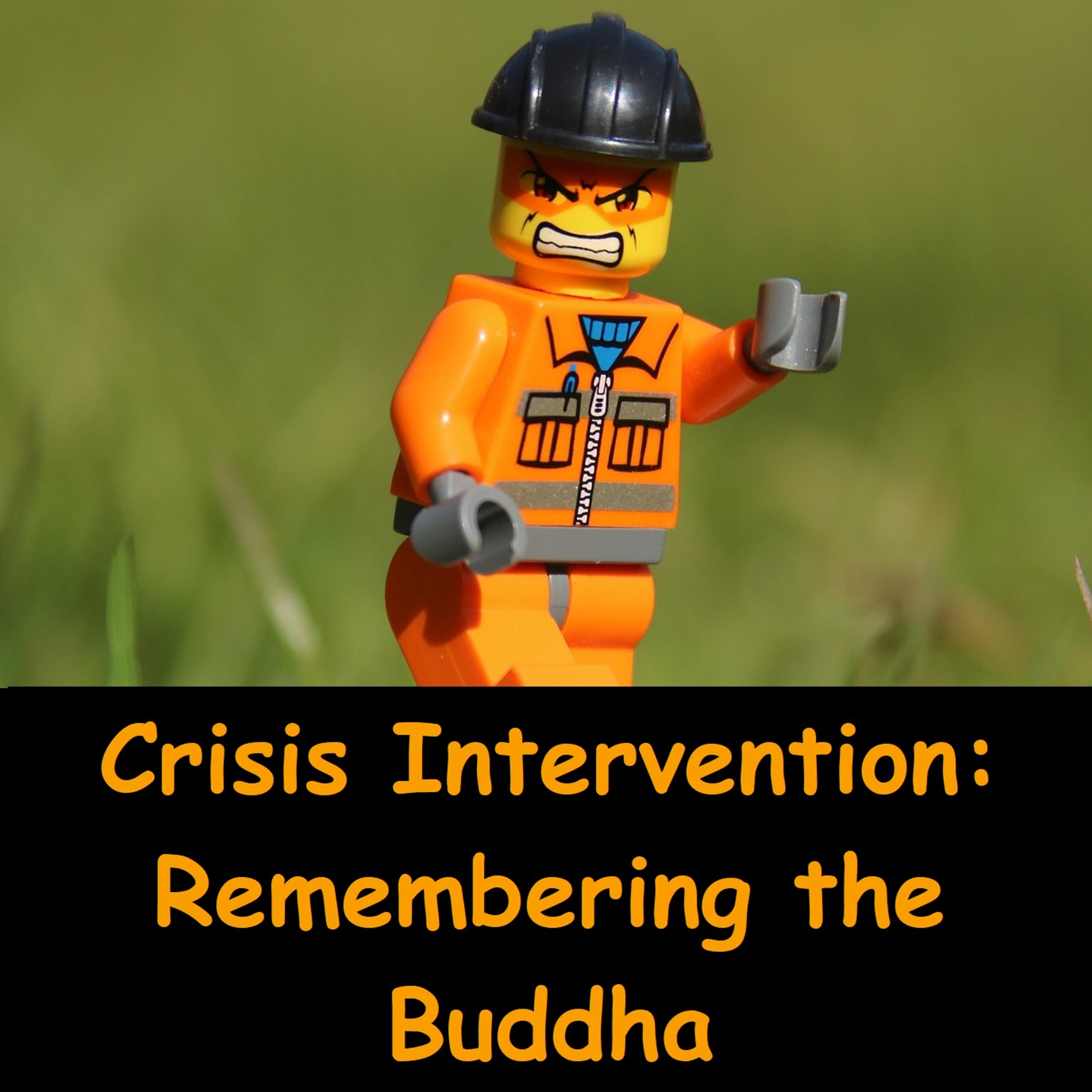
Ajahn Dhammasiha talks about the benefits of Buddhānussati, recollecting the Buddha.
This meditation object can be particular helpful if we're finding ourselves overwhelmed by emotions. Reciting "Iti pi so..." or "Buddho" loudly, and totally focussing the mind on the Buddha, can cut through strong defilements or emotional turmoil, and bring our mind back to a more wholesome state.
Ajahn also answers a question on ānāpānasati (mindfulness of the breath):
What to do when the breath becomes so refined that I can't feel the breath anymore in my meditation?
Webs...
Wrong Direction: Desire, Anger, Confusion, Fear | Don't Let Toxic Emotions Highjack Your Mind | Ajahn Dhammasiha

Ajahn Dhammasiha talks about the 4 'Agati', the 4 wrong courses of action:
Chanda-Gāmini = Going in Direction of DesireDosa-Gāmini = Going in Direction of AversionMoha-Gāmini = Going in Direction of ConfusionBhaya-Gāmini = Going in Direction of FearIf we move in the direction of lust, anger, delusion and anxiety, we're moving in the wrong direction: Not away from suffering, but into more and more suffering.
If we're influenced by the 4 Agati, we will not be able to make the right decisions. If they are based on desire, anger, confusion or fear, our actions will...
Devoted to Persuit of Pleasure | Loving Kindness as Source of Happiness | Metta | Ajahn Dhammasiha
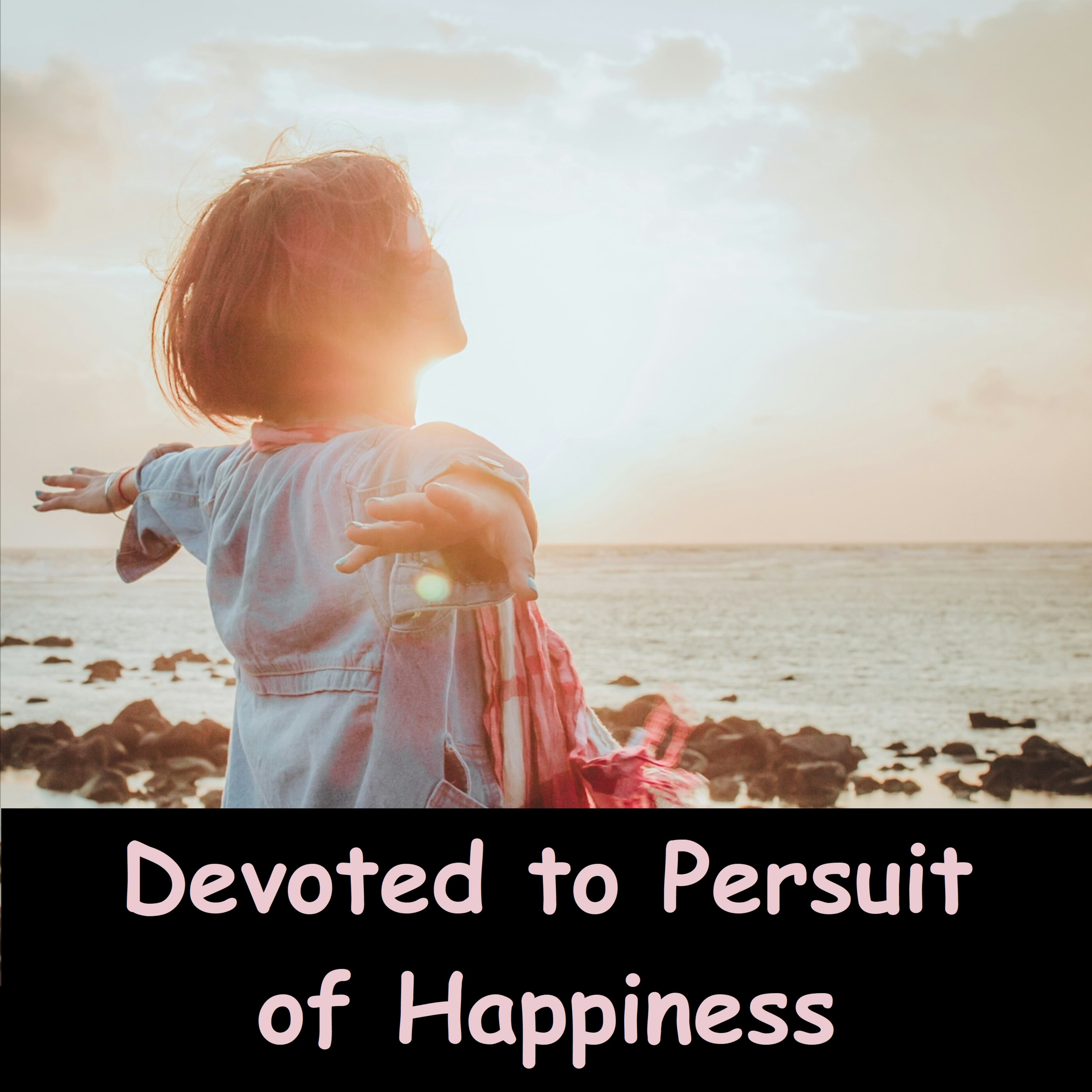
Amazingly, the Buddha stated in Pāsādika Sutta (Dīgha Nikāya/Long Discourses #29) that his followers are devoted to the persuit of happiness.
However, it has to be qualified what kind of happiness we're after:
We're not persuing happiness based on evil and unwholesome actionsWe're not persuing pleasures of the senses However, we are devoted to persue the joy, rapture and bliss of samādhi/jhānaAjahn Dhammasiha points out that mettā/loving-kindness is for many meditators the easiest way to get access to non-sensual happiness; and he encourages us to c...
Mindfulness in Daily Life | Sati | Satipatthana | Foundations of Mindfulness | Ajahn Dhammasiha

Ajahn Dhammasiha shares reflections how to cultivate mindfulness (Sati) in daily life.
He points out the importance of being aware/mindful of our intentions, as intention (cetana) is what creates karma.
We also have to be mindful of our emotions and feelings (3rd & 2nd Satipaṭṭhāna/Foundation of Mindfulness). Pleasant and unpleasant feeling (vedanā) is the primary motivator for all our actions.
Finally, it's so important to develop mindfulness of our body, re-connecting with out body, feeling our body, instead of being stuck in mental proliferations and mobile phone screens.
Website...
BAD Meditation: It actually Teaches Us a Lot | Vipassana | Self Knowledge | Ajahn Dhammasiha

What we consider a 'bad' meditation session, e.g. the mind can't settle down and is struggling with strong emotions like anger, lust and anxiety, can be very useful to gain insight into our own character.
Rather than being upset with ourselves thinking 'I can't really meditate'; or becoming frustrated and demotivated; we investigate the obstructions to gain insight and understanding into our own character and the working of our mind.
Once we've identified them, we can apply wisdom and skilful means to overcome them, contemplating them to let go of them.
<...
Emptiness: Not Getting More, But Getting More Empty | Sunyata | Suññatā | Ajahn Dhammasiha
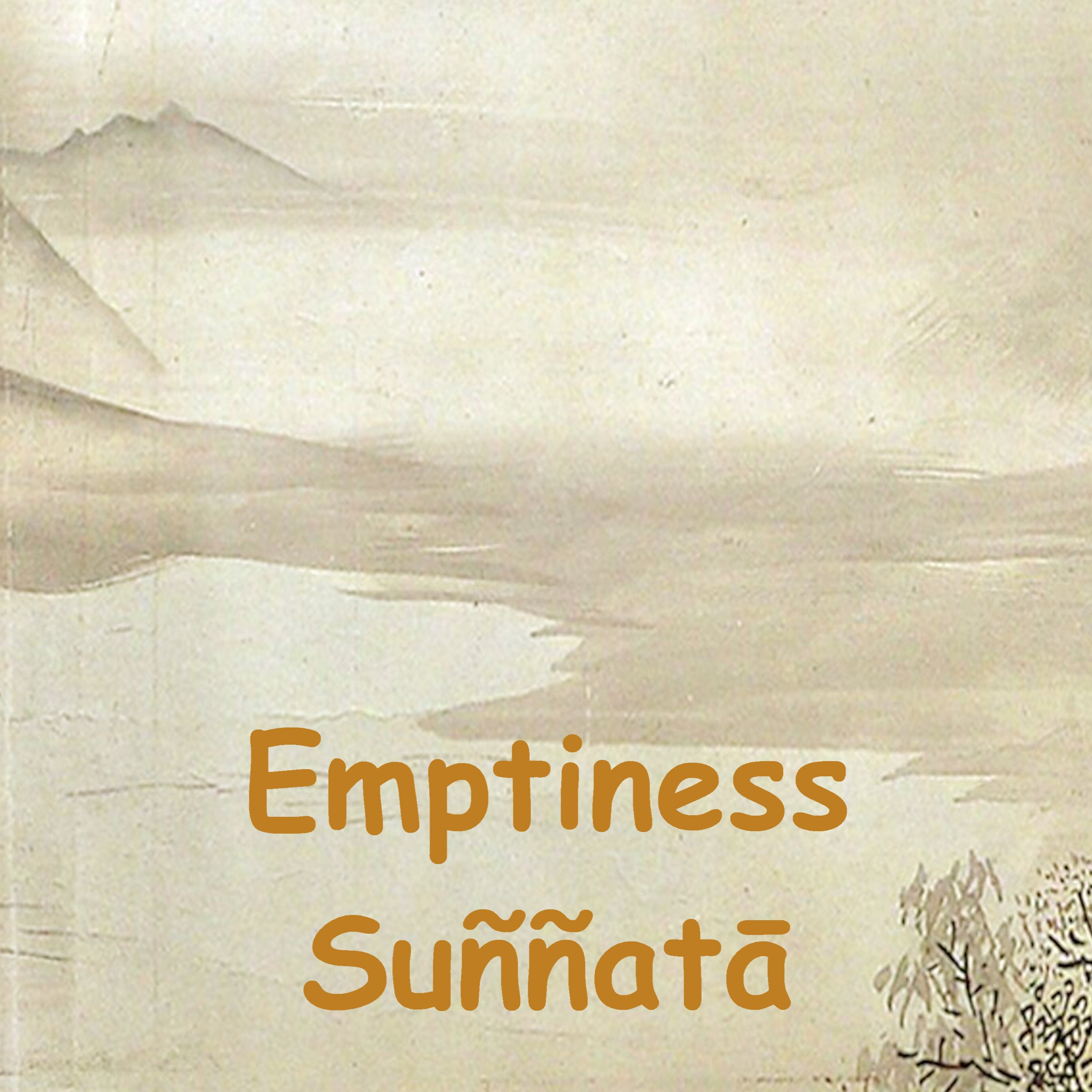
Ajahn Dhammasiha talks about one of the most profound aspects of the Buddha's teaching:
Emptiness (Sunyata / Suññatā)
On the most profound level, Emptiness means empty of Self, Me, Mine and I.
An enlightend person, an arahant, has seen through and abandoned all delusions of I, me, mine and self.
The Stream-Enterer (Sotāpanna, first of four stages of Awakening) has abandoned the delusion of Sakkāya-Diṭṭhi (Entity-View), he is empty of any view or doctrine of Self, though he still has thoughts & perceptions of me, mine and I.
Emptine...
Intro to Breath Meditation | Guided Buddhist Meditation | Anapanasati | Mindfulness of Breathing

Ajahn Dhammasiha guides us through a Buddhist meditation on Mindfulness of the In and Out Breath (ānāpānasati).
He specially emphasizes the following points:
1.
Feeling the whole physical body with every breath.
2.
Calming and relaxing all bodily tensions with every breath.
3.
Enjoying the meditation. Developing feelings of gladness, rapture and bliss with every breath.
4.
Brightening the mind with every breath.
5.
<...4 Noble Truths in Daily Life | Applying Buddha's Teaching in Everyday Life | Ajahn Dhammasiha

Ajahn Dhammasiha is asked how to apply the Buddha's teaching of Four Noble Truths in our daily life.
The 4 Noble Truths are a core teaching of the Buddha, that is acknowledged as fundmental in all Buddhist traditions, including Therevada, Mahayana and Vajrayana.
These thruths do not constitute a philosophical thought excercise, but are directly applicable to our experience of pain, disappointment and suffering. They show us a practical method in the Noble Eightfold Path to completely extricate ourselves from pain, frustration, depression, old age sickness, death and repeated birth.
Ajahn points out that...
Mindfulness of Breathing: All 16 Steps | Breath Meditation | Anapanasati | Ajahn Dhammasiha

Mindfulness of the In-and-Out-Breath, Ānāpānasati, was the favourite meditation object of the Buddha himself. He has given us very comprehensive and detailed instructions how to develop this form of meditation.
However, many meditators, often even those practising regularly for many years, are not fully aware, or at least do not really apply, the instructions as provided by the Buddha.
To encourage everyone to receive the full results of their Breath Meditation, Ajahn Dhammasiha goes through all 16 steps of Mindfulness of Breathing, as expounded by the Buddha; e.g. in Ānāpānasati Sutta, Majjhi...
New to Buddhism - How to Start | Ajahn Dhammasiha | Buddhist Practice for Newcomers

Ajahn Dhammasiha responds to a question by someone just getting started in their Dhamma practise.
Ajahn talks about karma, generosity and kindness; and the future results of our karma.
He mentions rebirth, the fact that our mind doesn't just vanish at death, but will connect with a new body in one of the different realms of existence, according to our karma and attachments.
Ajahn recommends to go back to what the Buddha himself actually taught, and explains that in the oldest part of the Theravada Pali Canon we can find the most authentic...
Abandoning Ill Will | Using Loving Kindness & Wisdom to Counter Anger | Ajahn Dhammasiha Dhamma Talk

Ajahn Dhammasiha is asked for advice to overcome ill will.
Ajahn talks about the two fundamental approaches:
Developing Loving Kindness, Compassion and Forgiveness to strengthen the opposite qualities in our mindUsing wisdom to contemplate and understand anger. For instance, if we're mindful, we can notice that ill will actually feels bad, and that we ourselves are the first 'victim' of our anger.Website
Our Spotify Playlists
Newsletter
Dhammagiri Youtube Channel
Pics
#illwill #anger #grudge #metta #lovingkindness #insight #vipassana #wisdom
Transforming Pain from Loss of Loved Ones into Samvega/Spiritual Urgency | Ajahn Dhammasiha

Ajahn Dhammasiha explains the emotion of Saṃvega = Spiritual Shock/Spiritual Urgency.
When we encounter Dukkha/Pain/Loss/Disappointment, the resulting sadness can make our heart dark and depressed.
However, it's also possible to turn the pain we experience into a powerful motivation to practise the Buddha Dhamma with even more commitment and dedication, to ultimately free our heart from all suffering in the experience of the Deathless/Nibbāna.
Website
Our Spotify Playlists
Newsletter
Dhammagiri Youtube Channel
Pics
#pain #loss #bereavement #buddhadhamma #dhammatalk
Seeing Things as They Truly Are | Vipassana Insight | More Observing, Less Doing | Ajahn Dhammasiha

SHORT TALK 13 MIN
Ajahn Dhammasiha encourages us to dedicate more attention to the quality of passive observation, rather than always being involved with doing things.
We have to watch, observe, simply see how conditions unfold without interfering, in order to develop vipassana (insight).
Yathābhūta Ñāṇadassana
means seeing things as they really are, without distorting.
We have to see the impermanent as impermanent, rather than distorting our perception towards permanence, in order to develop vipassana.
Website
Our Spotify Playlists
Newsletter
Dhammagiri Youtube Channel
Dhamma is Beautiful in the Beginning, Middle, and End | Ajahn Dhammasiha | Buddhism | Adi Kalyanam

Ajahn Dhammasiha talks about the meaning of:
'Ādi-kalyānam, majjhe-kalyānam, pariyosāna-kalyānam'
(Beautiful in the Beginning, Beautiful in the Middle, Beautiful in the End),
one of the unique qualities of the Buddha-Dhamma.
He also reponds to a question about the most senior monk disciple of the Buddha, Ven Aññā-Kondañña, and how he got his name.
Finally, Ajahn offers some reflections on the question which parts of the Dhamma are most important to humanity right now in our current global situation; and how we can share the...
Loving Kindness: Benefits & Supportive Reflections | Metta | Ajahn Dhammasiha | Dhamma Talk

Loving kindness is simply the intention of unconditional good will to all beings, without any distinction.
Ajahn Dhammasiha explains benefits of a well established practice of loving kindness ('Mettā').
When we experience benefits of our metta practice (for instance healthy, peaceful sleep and waking up happily), they are the most powerful motivation to continue to develop our loving kindness even further.
Website
Our Spotify Playlists
Newsletter
Dhammagiri Youtube Channel
Pics
#metta #lovingkindness #dhammatalk #buddhism #goodwill
Good Karma Brightens our Mind like Stars Illuminate the Night Sky | Ajahn Dhammasiha

Sometimes our mind may feel a bit dark, or frustated, or sad.
If we can arouse the energy to do some act of kindness, some simple act of generosity or sharing, it will shine like a little star and illuminate our mind.
As we accumulate more and more acts of good karma (puñña), we make our mind brighter and brighter, until it's illuminated like the star-spangled night sky.
Website
Our Spotify Playlists
Newsletter
Dhammagiri Youtube Channel
Pics
#karma #punya #puñña #goodkarma #mind #nightsky
Fighting with the Mirror Image | Ajahn Dhammasiha | Dhamma Talk at Dhammagiri

One of our retreatants noticed a crow attacking its mirror image in the glass sliding door. He doesn't reckognize that the image it actually himself. Instead, he thinks it's another crow intruding into his territory.
Ajahn Dhammasiha uses this as a metaphor for unskilful effort in meditation. In particular, we can't overcome the delusion of self by fighting it. If we take it for real, and fight it, it will only 'fight back' harder. The successful approach is to wisely observe it, analyse it, and reckognize it as an illusion.
Website
Our Sp...
Faith and Knowledge in Buddhism | Saddha | Confidence | Conviction | Ajahn Dhammasiha

Ajahn Dhammasiha is asked about the importance of faith in the Buddha's teaching.
The Pali term for the first of five spiritual faculties is 'saddha'. It could also be translated as 'confidence', 'conviction' or 'trust'.
Ajahn discusses various conditions that nurture our conviction and make it very strong.
He also explains that faith and knowledge are not contradictions, but can support each other in our Dhamma practice.
Website
Our Spotify Playlists
Newsletter
Dhammagiri Youtube Channel
Pics
#faith #saddha #buddhism #confidence #conviction #knowledge #dhammatalk
How to Observe the Mind and Feelings | Foundations of Mindfulness | Satipatthana | Ajahn Dhammasiha

Ajahn Dhammasiha is asked:
"How do we observe the mind?"
Ajahn offers some reflections on superficial layers of the mind (like thinking) and deeper layers that can only be accessed in Samādhi.
Ajahn also responds to a second question on mindfulness of feelings:
"How to Distinguish wordly and spiritual feelings?"
Spiritual happiness generated through good karma, generosity, virtue, sense retraint and samādhi/jhāna is so important, as it provides us with a superior happiness than sensuality.
Website
Our Spotify Playlists...
Euthanasia: Killing is BAD Karma, it's NOT compassionate | 1st Precept | Ajahn Dhammasiha

Ajahn Dhammasiha responds to a question about Euthansia.
He explains that the Buddha never encouraged or condoned the killing of other human beings at all, never mind the supposed motive or justification.
The first precept to abstain from intentionally killing of living beings is unambiguous - it has no 'exceptions' under any circumstance.
Any killing of human beings is very serious karma.
However, if we participate in, or encourage, the killing ("euthanasia") of our mother or father (which can easily occur in the context of "euthanasia"), we're getting...
How to Use the Four Noble Truths to End Suffering | Dhammacakkappavattana Sutta | Ajahn Dhammasiha

Āsāḷhā is the full moon marking the beginning of the 3 months rains retreat (Vassa). It's also the day commemorating the first formal teaching of the Buddha, the Dhammacakkappavattana Sutta ('Setting in Motion the Wheel of Dhamma').
Ajahn Dhammasiha offers reflections on the 4 Noble Truths (Cattāri Ariya-Saccāni) that the Buddha expounded in that discourse. In particular, he points out that these 4 Noble Truths are not just some theoretical concepts, but they are a pragmatic teaching, they are applicable ('opanayiko'), we have to do something with them in order to realize the intended result: Freedom from Sufferi...
Looking INSIDE to Find the Cause of Our Suffering: Craving and Attachment | 4 Noble Truths | Asalha

On occasion of Asalha Full Moon, Ajahn Dhammasiha offers reflections on the Four Noble Truths.
Whenever we experience pain and disappointment; when we feel hurt, offended, depressed, upset; we usually search for some EXTERNAL cause for all this suffering.
Maybe we come to the conclusion that our boss, or our mother in law, or our spouse, or the kids, or the politicians and those in power are to blame for the fact that we are hurting.
Or else it's the weather; or some sickness, some virus; or perhaps the mozzies or this or...
Power of Bodh Gaya, Place of Buddha's Enlightenment | Mahabodhi Temple | Vajirasana Diamond Throne | Ajahn Dhammasiha

Ajahn Dhammasiha recently spent at few days in Bodh Gaya, India, to visit and mediate at the Mahabodhi Temple.
This is the very spot where the Buddha attained supreme awakening. In fact, it is said that the 3 previous Buddha's in our aeon, also realized Sambodhi in this same spot.
Ajahn Dhammasiha talks about the amazing strength of the spiritual energy one can experience at the 'Vajirāsana' ('Diamond Throne'), the seat under the Bodhi tree where the Buddha defeated Māra and the defilements and released his heart from all attachment, craving and ignorance.
...
10 Strategies to Power Up Your Loving Kindness | Metta Meditation | Ajahn Dhammasiha

Ajahn Dhammasiha is asked about supportive conditions to make our Metta Meditation (Loving Kindness) stronger and more successful:
Loving Kindness to Oneself! Make sure you really include yourself when you extend Mettā to all beingsCompassion (Karuna). Use other Divine Abidings (Brahmavihāra) as appropriate, in particular Compassion/Karunā. If we struggle to extend metta to anyone, we may be more successful with Karuna. The most difficult people often have a lot of pain themselves. Once we see that, it's easier to have compassion to them.Contemplating Karma (Kamma). What I experience is the result of my own karma, my...Working with Negative Mindstates and Trauma | Ajahn Dhammasiha | Buddhist Dhamma Talk at Dhammagiri

In our meditation, we usually hope to find calm, happiness, bliss and enlightenment. But what we often encounter instead are all kinds of challenging and highly disagreeable mindstates. Defilements and distractions of all sorts assail the heart.
Ajahn Dhammasiha reminds us that these negative states are very normal to encounter in meditation. Unless we're someone with great pāramī, like Venerable Sāriputta, who's heart was was already very pure from practice in previous lifetimes, we have a lot of cleaning up to do in our mind.
In fact, that's exactly the poi...
Don't Be Afraid! - Abandon Anxiety through Confidence in the Buddha | Ajahn Dhammasiha

The Buddha has given us the following amazing promise:
"In the Dhamma well proclaimed by me thus, which is clear, open, evident, and free of patchwork, those who have sufficient faith in me, sufficient affection for me, are all going to be reborn in heaven."
(The Buddha, Majjima Nikāya/Middle Length Discourses, #22 'Alagaddāpama Sutta'/'The Simile of the Snake)
Even if we can not attain full Nibbāna yet, and do not yet have the insight of a stream-enterer either, just by having a sufficient amount of confidence, faith and affection to...
Using the Breath to Investigate 4 Noble Truths | Guided Buddhist Meditation | Ajahn Dhammasiha | Dhammagiri | Anapanasati Cattari Ariyasaccani

Ajahn Dhammasiha explains how to contemplate the Four Noble Truths ('Cattāri Ariyasaccāni') within the framework of Breath Meditation ('Ānāpāṇasati'):
We start by mindfully observing, feeling and experiencing every inbreath and outbreath We allow our mind to gradually settle down, simply being mindful of each and every breath We mindfully observe when Craving ('Taṇhā') arises in our mind We notice that it is this very craving that causes our mind to get pulled away from our meditation object, the breath, and to follow all kinds of thoughts, phantasies, worries, memories, feelings, emotions... We wisely...The greatest miracle of the Buddha - The Fire Sermon | Adittapariyaya Sutta | How did Buddhism start

This is the story of the Buddha's greatest miracle presented by Ajahn Moneyyo: The Fire Sermon (Adittapariyaya Sutta) and the conversion of the three Kassapa brothers and their 1000 disciples. Chapters:0:00 Let's start...0:24 The three Kassapa Brothers6:23 The Buddha arrives at Uruvela Kassapa's ashram09:04 The fiery battle with the Naga King14:22 Sakka and Brahma come to visit the Buddha16:07 Spending an afternoon in the Himalayas19:17 The great flood - The 1000 ascetics take refuge24:35 The greatest Miracle: The Miracle of instruction27:40 The Fire Sermon31:54 The most successful discourse of the Buddha33:02 How to practice to make the mind uninflammableby desire, aversion...
Mudita - Wholesome Joy to Cultivate Awakening | Ajahn Dhammasiha | Dhammagiri | Buddha Grants 8 Favours to Lady Visakha

Ajahn Dhammasiha encourages us to give more importance to developing forms of wholesome joy. Like muditā, rejoicing in other beings good actions and accomplishments.
However dark the world sometimes may appear to us, if we look carefully, we can still find countless acts of goodness, kindness and beauty occurring all around us. Rather than focussing on problems, and indulging in the faultfinding mind, we can discover so many admirable deeds in this world.
When we focus on rejoicing in all the good that is done around us, we have a never ending source of happiness a...
Tips for New Meditators | Talk on Buddhism by Ajahn Dhammasiha at Dhammagiri Forest Hermitage

Ajahn Dhammasiha provides some advice for those who are just starting their meditation practice:
If sitting crosslegged is too difficult, just sit on a chair or stoolDo lots of walking meditation, if you feel restless or struggle with the postureTry to maintain mindfulness ('sati') not only in formal meditation, but throughout the dayPurify your practice of virtue ('sīla') by keeing the five precepts consistentlyDo act of kindness and generosity to generate plenty of good karma to brighten the mind and make it happy.Dhammagiri Website
Our Spotify Playlists
Newsletter
Dhammagiri Youtube Channel
Pics
#meditation #buddhistmeditation #dhamma #relaxation #calm #samatha
Anattā - The Buddha's teaching on Non-Self and how to use it for insight (Vipassanā) - The second Discourse of the Buddha | The Life of the Buddha

This talk gives an overview of the Anattā-Lakkhana Sutta, the Buddha's second discourse and how we can use the Buddha's teaching on Non-Self (Anattā) to free our hearts from clinging to what is impermanent, decaying and inherently unsatisfactory and suffering.
For a complete playlist of "The Life of the Buddha" series on YouTube, click on the link below:
https://www.youtube.com/playlist?list=PLbxbuMjfRsvxKRNGf2OpxFD322oyZzfWk
Chapters:
0:00 Introduction to the Discourse on Non-Self
3:16 Overview of the content of th...
The Life of the Buddha - The weeks after the awakening|The story of the Buddha

After the Buddha realized awakening he remained for several weeks meditating at Bodhgaya to fathom his realization in all aspects. Hear more about how the Buddha reflected, how he saw the cosmos and who were the beings who met the Buddha first after his awakening.
0:00 The first week after awakening: The Buddha reflects about dependent origination.
15:54 The second week after awakening: The Buddha surveys the cosmos and sees all beings burning with desire, aversion and delusion and afflicted by becoming.
24:25 The third week: The...
The Life of the Buddha - The supreme awakening of the Buddha | What is Enlightenment?|Spirituality

The account of the Buddha's awakening according to the most ancient sources, the Sutta and Vinaya Pitaka told by Ajahn Moneyyo. Hear how the Buddha was striving and succeeded in his quest to realize awakening - the deathless, ultimate liberation.Chapters:0:00 Introduction and the practice of the Budhisatta before awakening30:33 The first true knowledge - remembering his previous lives37:41 The second true knowledge - seeing how beings arise and pass away according to their kamma39:53 How did the first two true knowledges lead to the knowledge of the destruction of the taints, the third true knowledge and the four...
The Life of the Buddha - The Noble Search by Ajahn Moneyyo|The spiritual quest for awakening of the Buddha

Hear about the spiritual quest for awakening of the Buddha - His noble search for peace & liberation beyond birth, ageing and death. What motivated the Buddha to leave behind his life in luxury as prince and his family and kingdom and become a spiritual seeker?
A few discourses where the Buddha himself relates his life story that are quoted in the Dhammatalk:Middle Lenght Discourses of the Buddha (Majjhima Nikaya) Sutta No. 26 and 36
https://www.dhammatalks.org/suttas/MN...https://www.dhammatalks.org/suttas/MN...
Numerical Dicourses of the Buddha...
